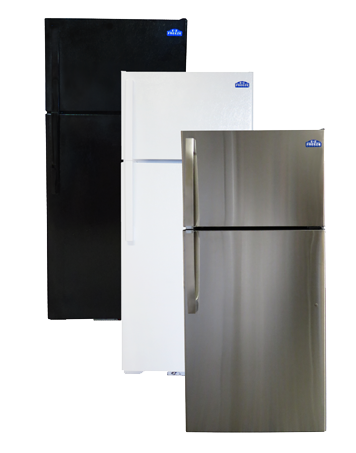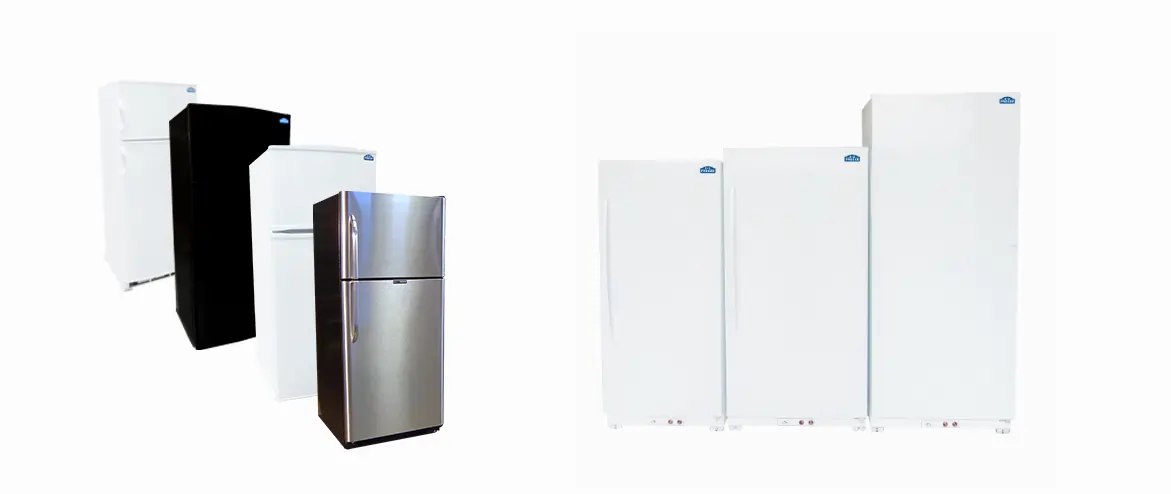After acquiring your new propane refrigerator from Warehouse Appliance, it is time for the install, and this guide can help with setting up your gas refrigerator. In order to ensure a safe and proper installation in your home or business, it is highly recommended that you hire a trained professional. However, if you decide to install it yourself, Warehouse Appliance wants to make sure you get your new fridge up and running properly while staying safer.
Safety Considerations Before Setup
Before you begin, it is important to consider ventilation. Gas refrigerators should always be used in well-ventilated settings. And, if at any point during the setup process you notice gas fumes, they should be dealt with quickly. If you smell gas, open all of the windows and doors in your property, do not turn any electrical switches off or on, and put out any open flames immediately. In addition, call your gas provider right away to make them aware of the issue.

Test for Leaks
You must test all connections for gas leaks before you ignite the gas unit. You can use a soapy water method or professional solutions such as a “Gas Leak Detector” to test the connection. This is accomplished by putting on the soapy or professional solution in the connections and looking for bubbles. Then, once you have ignited the refrigerator ignition unit, you should do a secondary test of all connections to ensure there are no leaks.
Check Gas Pressure
It is very important that the gas pressure be set correctly. Too high or too low of gas pressure may lead to poor performance or permanent damage to your gas refrigerator. Proper gas pressure for a LPG propane system is 11 inches of water column. Your gas supplier will test and set the correct pressure for you. It is possible to do it yourself. The design specifications for all EZ Freeze propane refrigerators state the proper pressure that the fridge operates on. The pressure can be checked by your gas supplier during installation. You can also use a manometer to check the pressure yourself.
Connect Gas Line
Before connecting the gas line, ensure you have enough flex space with the line to move the fridge away from the wall. This will allow enough room in the event your fridge needs servicing as well as for cleaning. It is also recommended for added safety to connect the flex line to an on/off valve.
Level
Because this type of gas refrigerator requires gravity to operate properly, it is important that the fridge remains level. If the refrigerator is not level, it may not run at peak efficiency.
Ventilate
It is important to position the refrigerator so there is enough space for heat to properly ventilate behind and above the unit. Without proper ventilation, the fridge could produce a heat buildup, negatively affecting performance, or it may create a draft, which could blow out the burner.
Burping a Propane Gas Refrigerator or Natural Gas Refrigerator
If your new refrigerator from Diamond Gas Refrigerators, EZ Freeze Gas Refrigerators, or most other gas refrigerators has been laid down during shipping or the unit is not cooling correctly within the first day or two of operation, it is possible that the unit may need to be burped. This process releases an air lock and allows the chemicals to return to the proper levels within the ammonia absorption unit. This process varies, depending on the brand of gas refrigerator you own. Please contact us for instructions on how to burp your new EZ Freeze refrigerator.
For Danby & Consul Models
When burping for Danby / Consul propane refrigerator models, turn the unit off and let the unit cool. Disconnect the gas supply line and carefully rotate the unit counter clockwise to its left side. Let the unit sit in this position for 15 to 20 minutes. After this period of time, rotate the unit counter-clockwise, so it stands on its top. Let the unit sit in this position for 15 to 20 minutes. From there, rotate the unit counter-clockwise to its right side. Let the unit sit in this position for 15 to 20 minutes. After another wait, rotate the refrigerator counter-clockwise back to its upright position, standing on the legs.
Tips for Operating Your Gas Refrigerator or Gas Freezer
Once the gas fridge or freezer is operating, let it chill down for approximately 8 hours before loading with food. You will notice the freezer will chill first. When the freezer portion is significantly chilled down, then the fridge section will start to get cold. This is the nature of the gravity operation built into the system.

It is also good to know that the refrigerator section is the first to be affected by any change to the thermostat, ambient air temperature, humidity, or change of door opening cycles. Because of this, it is wise to load warm or room temperature foods in smaller portions, a couple hours apart. It is also beneficial to let the unit stabilize for a few days prior to making adjustments to the thermostat.
Check the refrigerator compartment temperature first thing in the morning to get an accurate reading of the thermostat setting. We suggest using an external thermometer to monitor the temperatures.
Do not overload the unit with room temperature liquids, such as large jugs of water. Load the freezer with Ice trays or objects to be frozen prior to bedtime. This way the unit will have all night to recover. It can also be helpful to use Aluminum Ice Cube Trays, which make ice much faster than plastic trays.
Contact Warehouse Appliance with Questions on Gas Refrigerator Setup
The team at Warehouse Appliance is happy to provide support for setting up your gas refrigerator. Our team has experience with all types of propane and natural gas refrigerators and freezers, and we offer assistance over the phone to help ensure safer setup. Contact us today to learn more and ask any questions related to gas refrigerators and how to set them up.





